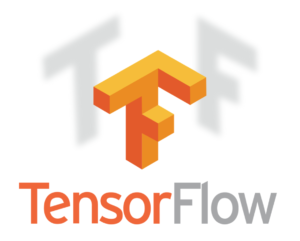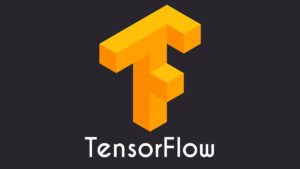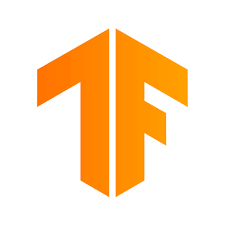TensorFlow

The TensorFlow: Powering Machine Learning and Deep Learning Innovations:
TensorFlow, developed by Google Brain and open-sourced in 2015, is one of the most popular and widely used frameworks for machine learning (ML) and deep learning (DL) applications. It is designed to enable researchers, developers, and data scientists to build, train, and deploy machine learning models with ease and flexibility. TensorFlow has evolved into a comprehensive ecosystem, offering tools for various ML workflows—from neural networks and computer vision to natural language processing and reinforcement learning.
In this article, we will explore TensorFlow’s key features, its advantages, and how it is reshaping industries with AI and machine learning.
What is TensorFlow?
TensorFlow is an open-source, end-to-end machine learning platform that allows users to design and execute machine learning models on a variety of hardware configurations, including CPUs, GPUs, and even specialized chips like Google’s Tensor Processing Units (TPUs). It provides a flexible environment for developing both traditional ML models and complex deep learning architectures, such as convolutional neural networks (CNNs) and recurrent neural networks (RNNs). The platform supports both high-level APIs, such as Keras for easy model building, and low-level operations for customization.
TensorFlow’s robust architecture makes it suitable for a wide range of machine learning applications, including image and speech recognition, natural language processing, time series forecasting, and more. Its versatility and scalability have made it a preferred choice for academic research and enterprise-level applications alike.
Key Features of TensorFlow:

-
End-to-End Machine Learning Platform:
- TensorFlow is an all-encompassing ML platform that supports the entire machine learning workflow. It covers everything from data preprocessing and model building to training, evaluation, and deployment. TensorFlow also offers integration with TensorFlow Extended (TFX), which helps in managing production-grade ML pipelines, ensuring models are deployable and scalable in real-world environments.
-
Support for Deep Learning:
- TensorFlow is especially powerful for deep learning tasks, offering a range of tools for designing and training deep neural networks. It supports advanced deep learning techniques such as CNNs for image classification, RNNs for sequential data processing, and transformers for natural language processing tasks. TensorFlow’s optimized performance on GPUs and TPUs further accelerates training times for deep learning models, making it suitable for handling large-scale datasets and computationally intensive tasks.
-
Keras: A High-Level API:
- One of the most popular aspects of TensorFlow is its tight integration with Keras, a high-level API that simplifies the process of building machine learning models. Keras provides a user-friendly interface that allows developers to prototype models quickly by stacking layers of neural networks and defining loss functions and optimizers in a few lines of code. For beginners, Keras offers an easy learning curve, while advanced users can still leverage TensorFlow’s full power by customizing model architectures and training workflows.
-
TensorFlow Hub:
- TensorFlow Hub is an online repository of pre-trained machine learning models that can be easily reused and fine-tuned for various tasks. Instead of starting from scratch, users can leverage models pre-trained on large datasets, such as image classifiers or text embeddings, and adapt them to their specific use cases. This transfer learning capability significantly reduces the time and resources needed to develop machine learning solutions, especially for those working with limited data or compute power.
-
Eager Execution Mode:
- TensorFlow offers Eager Execution, an imperative programming environment that evaluates operations immediately as they are called. This contrasts with TensorFlow’s original “graph execution” mode, which requires users to define the computation graph before running it. Eager Execution simplifies the process of debugging and iterating on models, making TensorFlow more intuitive for developers and data scientists who are familiar with other programming paradigms like Python.
-
Cross-Platform Flexibility:
- TensorFlow is highly flexible when it comes to deploying machine learning models across platforms.
-
Scalability and Distributed Computing:
- Its distributed computing capabilities enable parallel processing across clusters, speeding up the training process for complex models.
-
Visualization with TensorBoard:
- TensorFlow includes TensorBoard, a suite of visualization tools that helps users understand, debug, and optimize their models. This transparency into model performance is crucial for optimizing hyperparameters and improving overall model quality.
-
TensorFlow Lite for Mobile and Edge Devices:
- TensorFlow Lite is a lightweight version of TensorFlow optimized for mobile and embedded devices. It allows machine learning models to be deployed on resource-constrained devices such as smartphones, tablets, and IoT hardware.
-
TensorFlow.js for Web Development:
- TensorFlow.js brings machine learning to the web, allowing developers to build ML-powered applications directly in browsers using JavaScript.
Advantages of TensorFlow:
- Comprehensive Ecosystem:
TensorFlow’s ecosystem is vast and continues to expand, providing users with tools for every stage of the machine learning process.
Industry Applications of TensorFlow:.
- Finance:
Financial institutions use TensorFlow for fraud detection, risk management, and algorithmic trading. - Retail:
TensorFlow helps retailers personalize customer experiences through recommendation systems, inventory management, and demand forecasting.
Conclusion:
TensorFlow has become a cornerstone of modern machine learning and deep learning development. Its flexible, scalable architecture and comprehensive ecosystem make it a powerful tool for both research and enterprise applications.
